16 Dec Revised Lead and Copper Rule Takes Effect
A revised Lead and Copper Rule (LCR) from the Environmental Protection Agency is moving forward, including new guidelines to reduce lead in drinking water.
Read More About OWASA Efforts to Comply with Revised Lead and Copper Rule
OWASA is in the process of engaging a consultant to assist in developing a lead service line inventory for our community and a strategy for removing any identified lead service lines. Where possible, OWASA will look to leverage federal and state funding from the Infrastructure and Jobs Act to assist in addressing any identified issues.
Lead is not typically found in raw water sources, like OWASA’s main drinking water supplies Cane Creek Reservoir and University Lake. There is no detectable level of lead in the drinking water that we provide to your home. However, it can enter drinking water from corrosion of plumbing materials that contain lead.
OWASA treats our water to prevent lead and other plumbing materials from entering drinking water through corrosion. OWASA’s water mains are not made of lead. Lead can sometimes be found in the service lines that connect homes and businesses to water mains, but OWASA has no known lead service lines. Small sections of pipe called goosenecks were used to connect some lines to the main; OWASA removed all known lead goosenecks in the 1990s.
Some plumbing components within homes and businesses can contain lead such as brass or chrome-plated brass faucets and lead solder, which was used to connect sections of copper pipe. Lead solder is more likely to be found in homes built before its use was banned in 1986.
For over 20 years, samples of water leaving OWASA’s Water Treatment Plant have tested below the detectable level for lead of 3 parts per billion (ppb). One update in the new LCR is a lower detection limit, which means samples must be analyzed using a method that can measure lower levels of lead than before. In anticipation of this change, OWASA began testing our latest round of regulatory sampling carried out from June to September 2020 at the new threshold; all samples came back below this updated level of 1 ppb.
We will be in contact with customers as further updates are necessary as the compliance date for the new rule approaches in 2024. In the meantime, please reach out to our Water Treatment Plant staff with any questions or concerns. If you have any concerns, OWASA offers free lead and copper testing of our water to customers in our service area.
Protecting our community from lead is a responsibility we share with you. Our Water and Health Page has additional information for reducing your risk to exposure to lead through drinking water.
Thank you for your patience and cooperation as we work through the revised LCR and work to continue providing you with high-quality drinking water.



